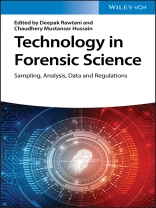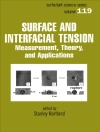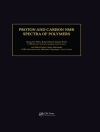The book ‘Technology in Forensic Science’ provides an integrated approach by reviewing the usage of modern forensic tools as well as the methods for interpretation of the results. Starting with best practices on sample taking, the book then reviews analytical methods such as high-resolution microscopy and chromatography, biometric approaches, and advanced sensor technology as well as emerging technologies such as nanotechnology and taggant technology. It concludes with an outlook to emerging methods such as AI-based approaches to forensic investigations.
Mục lục
PART I: MODERN PERSPECTIVES OF FORENSIC SCIENCE TECHNOLOGIES SOFTWARE
Software-Defined Networking Enabled Smart and Safer Buildings
Advanced Forensic Models
PART II: FORENSIC SAMPLES
Biological Evidence and Their Handling
Physical Evidence and Their Handling
Chemical Evidence and Their Handling
PART III: ANALYTICAL TECHNIQUES FOR FORENSIC SCIENCE
Microscopy for Forensic Investigations
Chromatographic Techniques Forensic Investigations
Hyphenated Techniques for Forensic Investigations
PART IV: BIOMETRICS TECHNOLOGY FOR FORENSIC SCIENCE
Conventional Biometric Techniques in Forensic Investigations
Emerging Biometric Techniques in Forensic Investigations
PART V: SENSORS TECHNOLOGY FOR FORENSIC SCIENCE
Sensors for the Detection of Explosives and Gunshots Residues
Sensors for the Detection of Illicit Drugs
Sensors for the Detection of Biological Fluids
PART VI: EMERGING TECHNOLOGIES (NANOTECHNOLOGY, TAGGANT TECHNOLOGY ETC.)
Nanotechnology in Forensic Science
Taggant Technology in Forensic Science
PART VII: ETHICAL AND LEGAL ISSUES OF FORENSIC SCIENCE
Conventional and Internal Standards in Forensic Sciences
Evidence Collection and Forensics on Social Networks
PART VIII: ECONOMICS & COMMERCIALIZATION OF FORENSIC SCIENCE TECHNOLOGIES
Commercialization on the Evaluation of Evidence
Commercialized of Regulatory Forensic Program
PART IX: FUTURE OF FORENSIC SCIENCE TECHNOLOGIES
Future of Forensic and Crime Scene Science Technologies
Forensic Science in a Process of Transition
Giới thiệu về tác giả
Deepak Rawtani, CEng, Ph D, is Associate Professor of Forensic Nanotechnology at the Institute of Research and Development, Gujarat Forensic Sciences University, Gandhinagar. His research focus is on functionalization of halloysite nanotubes, delivery of biomolecules and drugs immobilization. Besides being a Researcher, he is also a Technical Assessor for the National Accreditation Board for Testing and Calibration Laboratories in the field of Forensic Biology and Pharmaceuticals.
Chaudhery Mustansar Hussain, Ph D, is Adjunct Professor in the Department of Chemistry & Environmental Sciences at the New Jersey Institute of Technology (NJIT), USA. His research is focused on the applications of nanotechnology and advanced materials in the environment and analytical chemistry. Dr. Hussain is the author of numerous papers in peer-reviewed journals as well as prolific author and editor of several scientific monographs and handbooks in his research areas.












